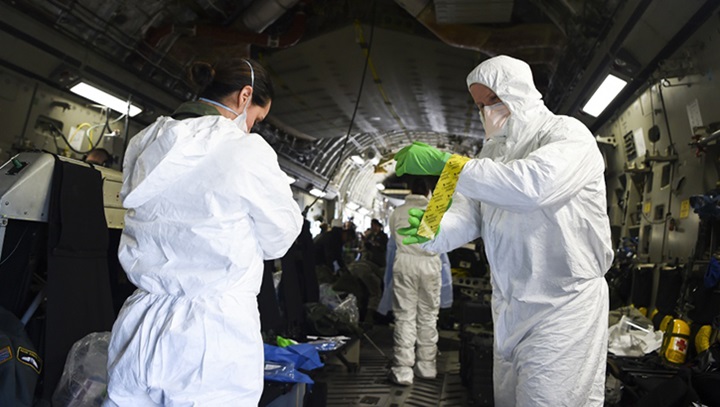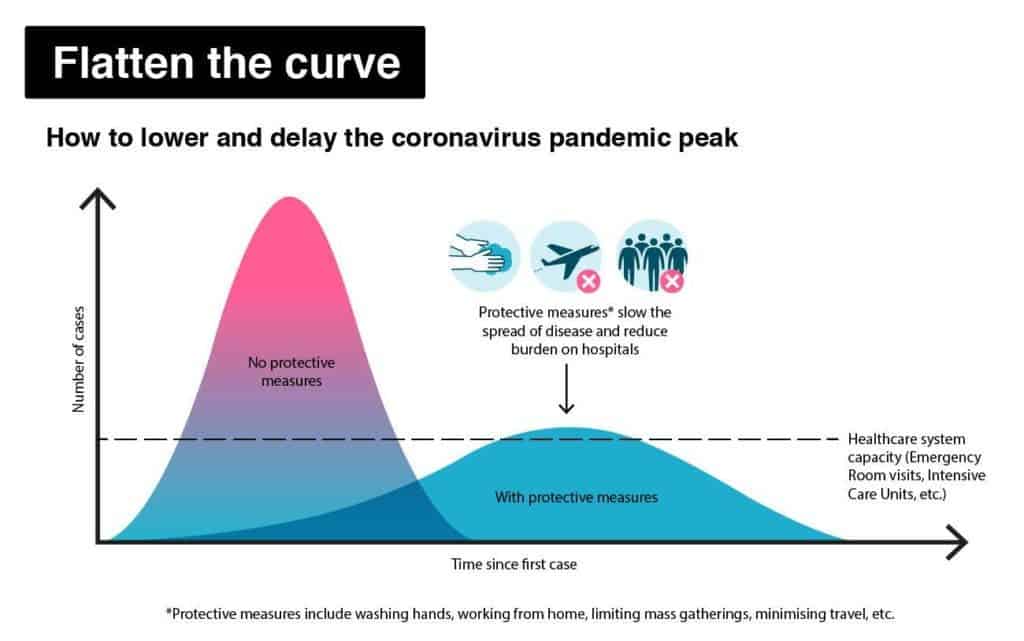
People are stockpiling goods, schools have closed, and planes are flying empty. It all looks like a doomsday scenario out of some dystopian novel. But while the situation is indeed rather bleak, it’s not the end of the world — but it’s still a huge nuisance, not to mention incredibly psychologically taxing.
As the coronavirus crisis worsens with each passing day, one thought that creeps into everybody’s mind right now is “when will this all end?”. The short answer is no one has a clue.
But that doesn’t mean there aren’t opinions.
When will the coronavirus pandemic end
Walter Ricciardi, a member of the World Health Organization and a consultant for the health ministry of Italy (one of the hardest-hit countries by the COVID-19 pandemic), says that life could go back to normal this summer, by which he means summer in the Northern Hemisphere.
“I have the impression that, if we are lucky and all work together, we should get through to the summer,” he said. “That’s when we should be able to return to normal life.”
Ricciardi’s assertion is based on the development of the SARS outbreak of 2003. The SARS outbreak was caused by the SARS-CoV-1 virus, another coronavirus strain, which infected over 8,000 people in two dozen countries and killed 800 people. The SARS outbreak also started around January, like the COVID-19 pandemic caused by SARS-CoV-2, and ended in May or June.
While the two viruses are part of the same family, and obviously have many similarities, that’s not enough grounds to believe COVID-19 will have the same flattening trajectory. For one, it’s much more contagious, having infected over 165,000 people in less than three months since it first appeared in Wuhan, China.
Others believe that the virus will go away and the situation will sort itself out by summer due to the heat. That’s what happens to the flu and the cold when winter makes way for summer, so there is an expectation that the same might occur for COVID-19. Except this is nothing like the flu. In fact, such comparisons are dangerous to make.
Don’t count on summer to sweep the coronavirus away
This sort of reasoning is actually easily proven wrong by the fact that Australia has at least 299 cases of COVID-19 and five confirmed fatalities, and summer there just ended. The temperature is regularly over 30 degrees Celsius (86 Fahrenheit) in Singapore, but the country has 226 cases.
That’s not to say that temperature doesn’t play a major role in the transmission of the disease. A recent study that came out just a few days ago found that the more the temperature and humidity increase, the lower the R0 of the virus.
The R0 parameter (called the basic reproductive ratio) refers to the expected number of secondary infections arising from a single individual during their infection period. For instance, an R0 of 2 means that an infected person will, on average, pass it to 2 other people. A lower R0 means the disease is likely to pass to fewer people. An R0 below 1 means the disease will eventually disappear.
“One degree Celsius increase in temperature and one percent increase in
relative humidity lower R by 0.0266 and 0.0106, respectively. This result is consistent with the fact that the high temperature and high humidity significantly reduce the transmission of influenza. It indicates that the arrival of summer and rainy season in the northern hemisphere can effectively reduce the transmission of the COVID-19,” the Chinese researchers wrote.
That being said, it won’t go away by summer in the northern hemisphere just because of temperature alone — it might help curb the spread of transmission but shouldn’t stop it. This also means that countries in the southern hemisphere should see more cases during winter.
COVID-19’s estimated R0 is around 2.5, based on data from China. There’s no guarantee that it will be the same for the rest of the world, but if this is the case, it would make it one of the more contagious viruses out there. This means that it has the potential to spread massively, potentially infecting around 60% of the world’s population according to some estimations, and killing millions of people in the process.

However, once the disease peaks, the spread of disease should dampen and eventually go away once most people develop immunity — that’s if they don’t get reinfected. One early estimate based on a model performed in February suggests that the outbreak will peak around late May.
The timing of the global peak of COVID-19 will ultimately depend on containment efforts, which are meant to delay the spread of disease in order not to overrun national healthcare systems. Italy is a prime example of how all of this can go wrong, having experienced a 7% mortality rate so far. In Italy, hospitals are so overcrowded that doctors are scrambling for solutions and are forced to decide which people are worth saving like it’s a war zone.
Meanwhile, countries like the UK seem adamant at doing the exact opposite — or at least do it in a different way. They want to let the infection run its course in what they consider to be a controlled fashion, so that the majority of the population gets infected in order to produce heard immunity (at least 60% of the country’s population must be infected). The UK claims that the country’s foremost public health experts have crunched the numbers and this approach will work best in order to protect the nation’s citizens. Many experts are skeptical that this will turn out well and they have good reasons too — if most people get sick at the same time, the country will simply grind to a halt.
The truth is that we’ve never seen before radical containment measures such as country-wide lockdowns, international travel bands, and the likes.
Experts are confident that such measures will lower the overall disease, but no one can tell for sure when all of this will end. It might be by summer, it might be a year from now, it might last even more. It might become seasonal like the flu.
No one really knows. For now, it’s best to stay on the safe side.
UPDATE: The New York Times got ahold of a leaked 100-page document from the US government, which expects the pandemic to last 18 months or longer, resulting in “significant shortages for government, private sector, and individual US consumers.”






